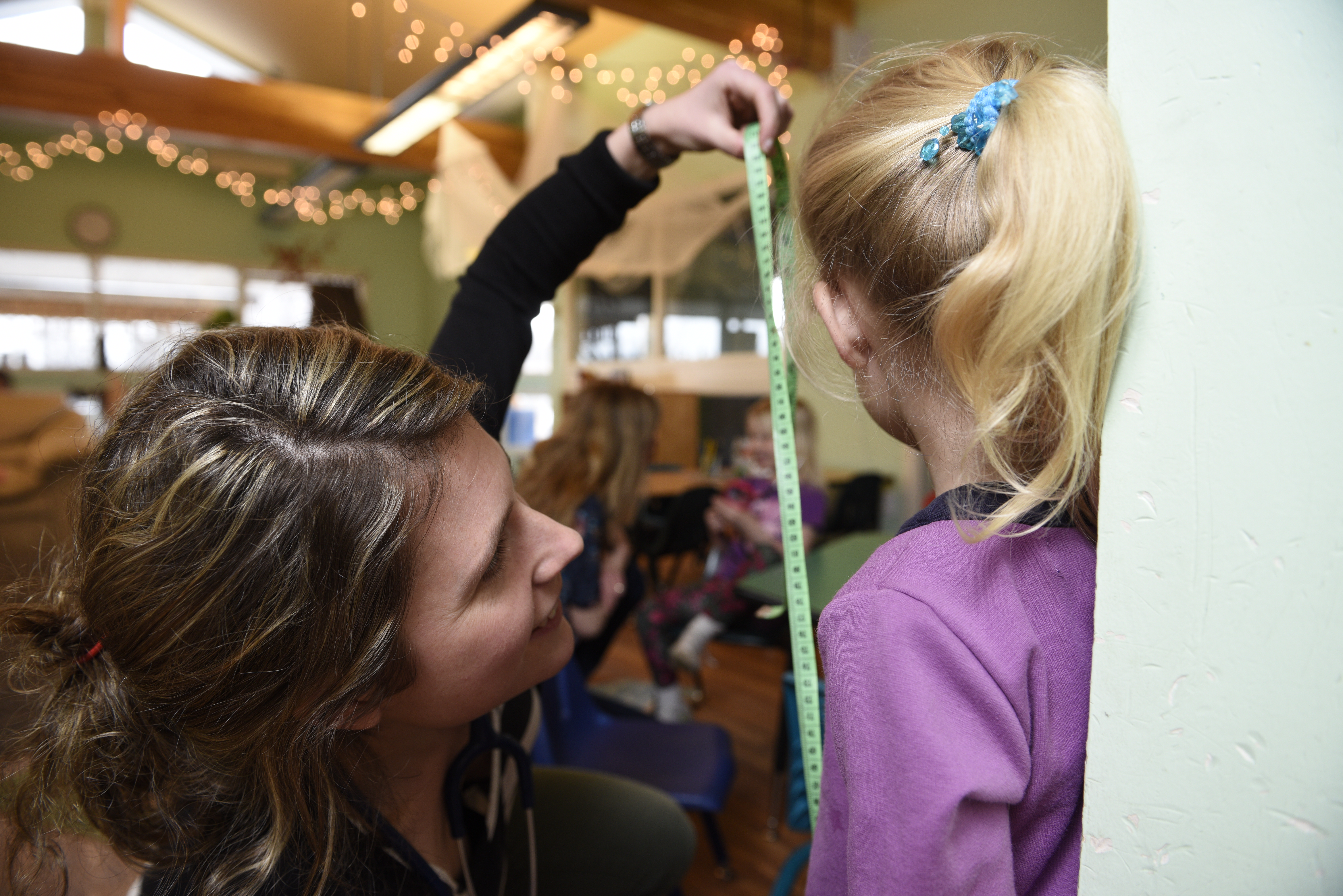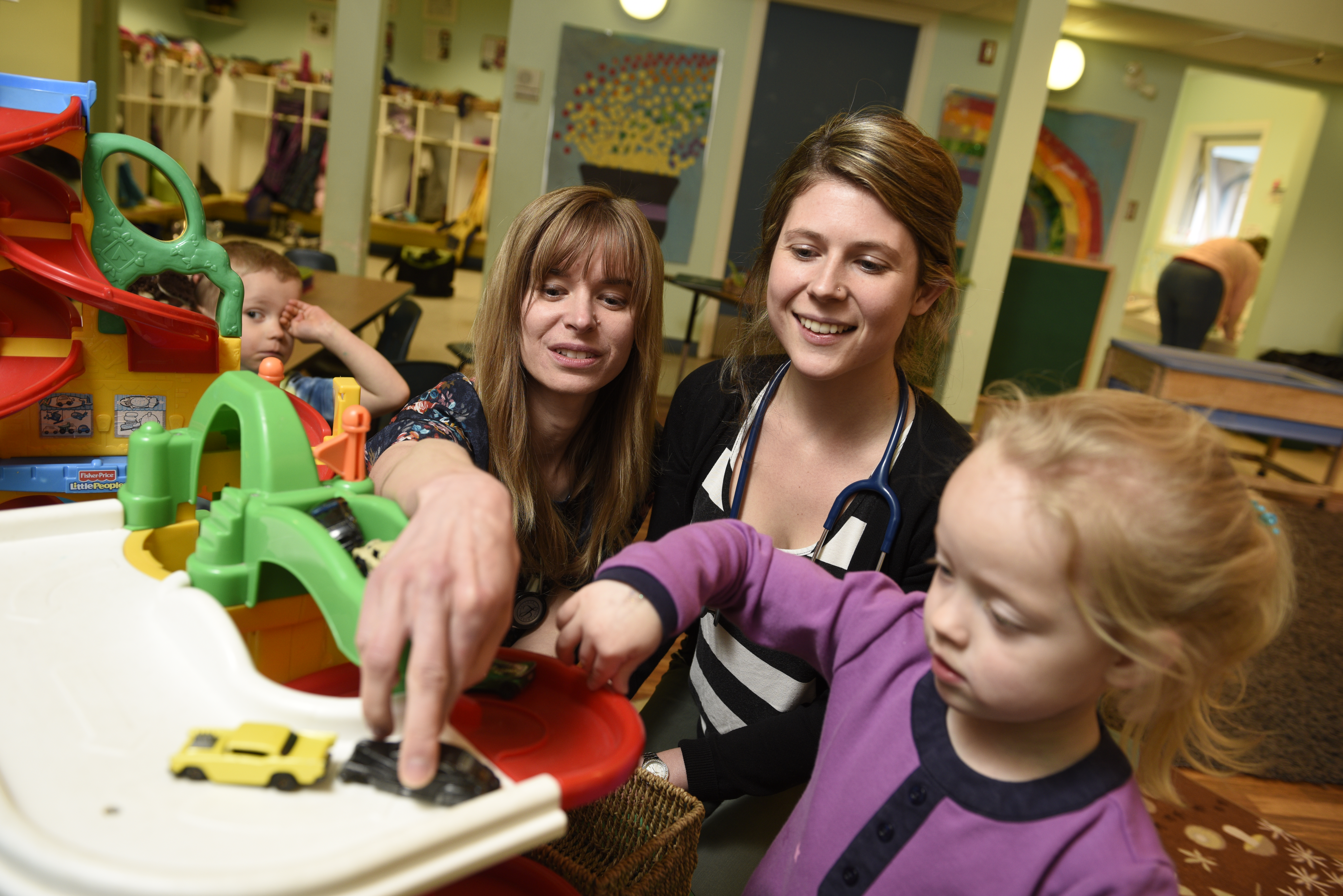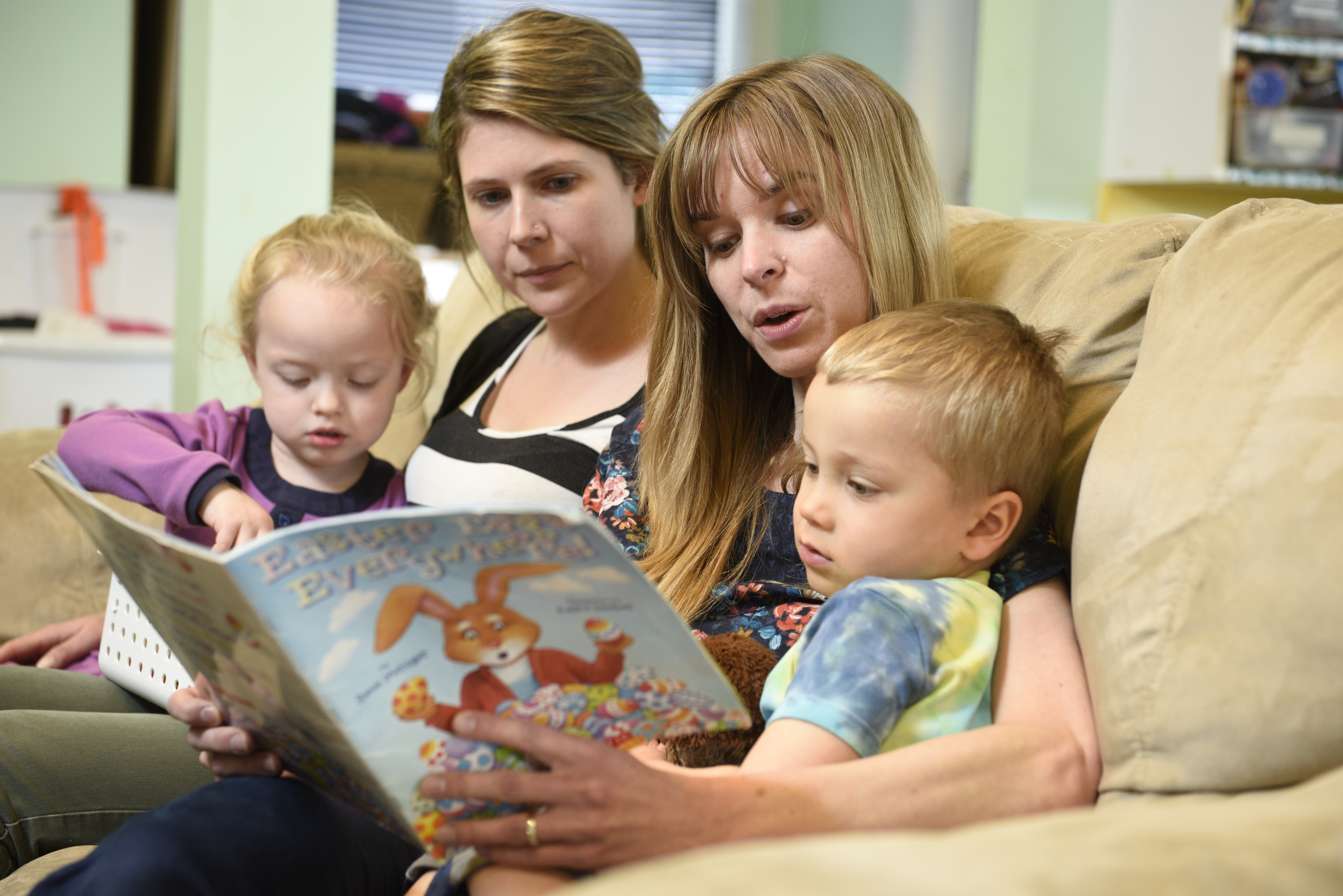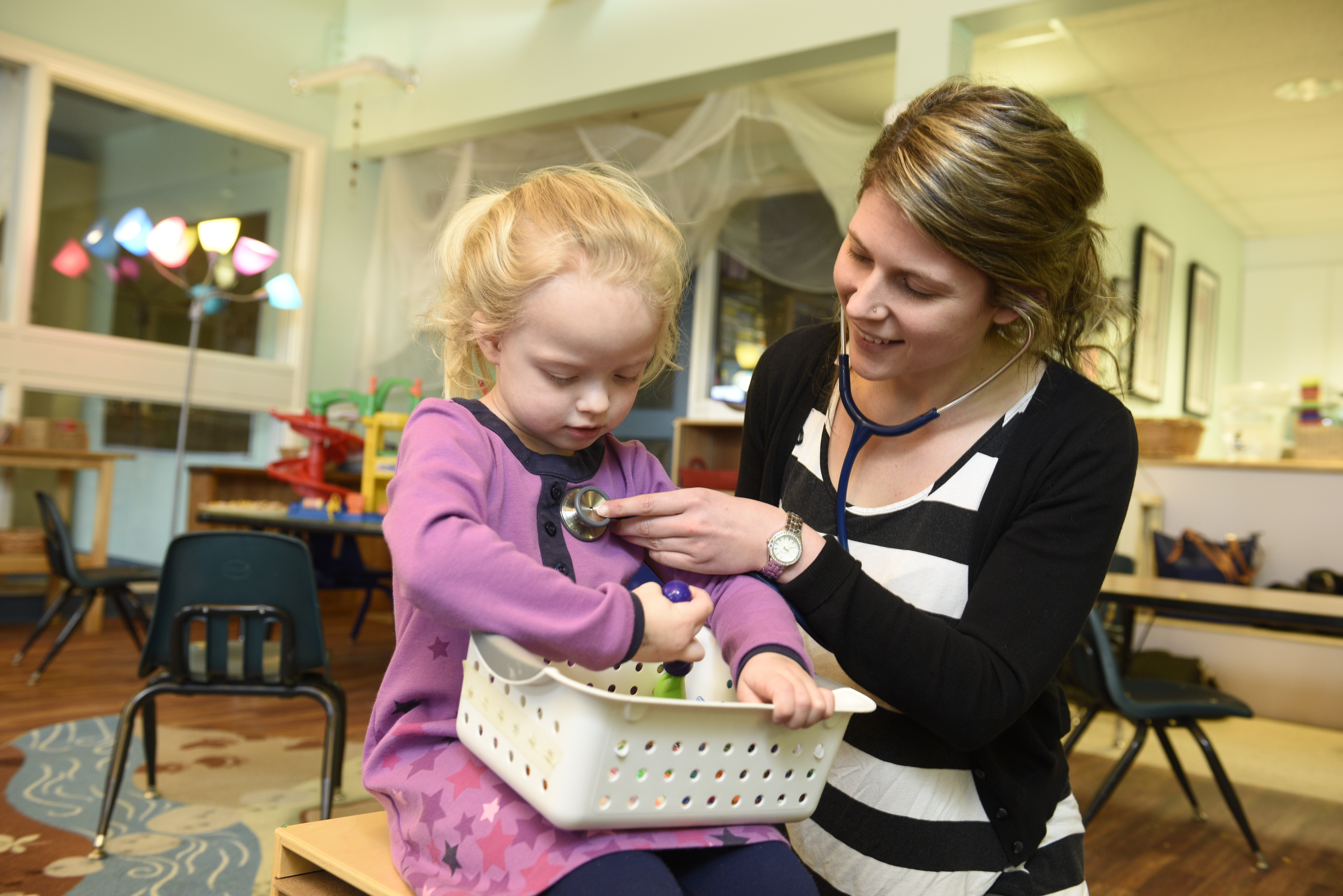Daycare Check Up
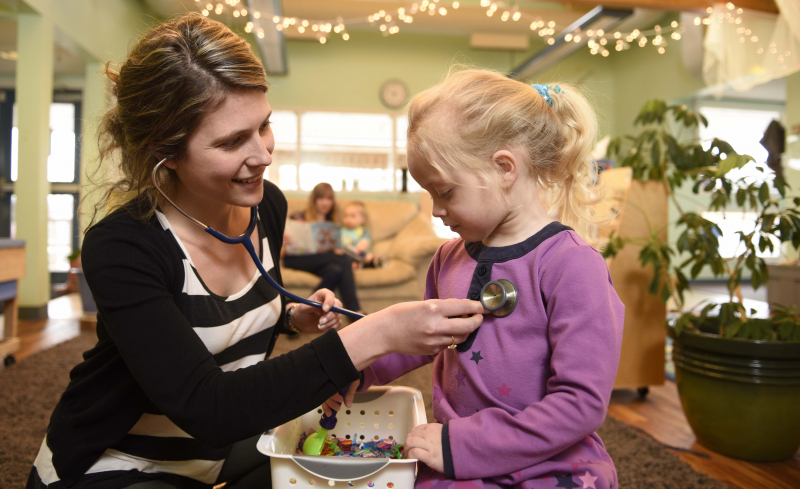
The cacophony produced by two dozen children at play is not at all like the institutional serenity of a typical primary care exam room, yet for a group of UNBC Family Nurse Practitioner students it is the unique setting for a clinical practice experience.
Every year, as part of the Integrating Primary Health Care Practicum, the students visit the UNBC Childcare Centre and interact with the children in the pre-school aged daycare. With laughing, crying, banging and crashing providing the background noise, the nurse practitioner students gain valuable experience working with children in a low-stress setting.
“It is wonderful to have an experience interacting with the children in an environment where they feel comfortable,” nurse practitioner student Kristine Rowswell explains. “We are able to do things you normally cannot easily do in a clinical setting, like watching how the children are able to hop and jump or throw a ball.”
Daycare staff members pair each nurse practitioner student with a preschooler for the 90-minute visit. The students conduct a light, non invasive, physical exam by looking into the children's throats and ears, and listening to their hearts and lungs.
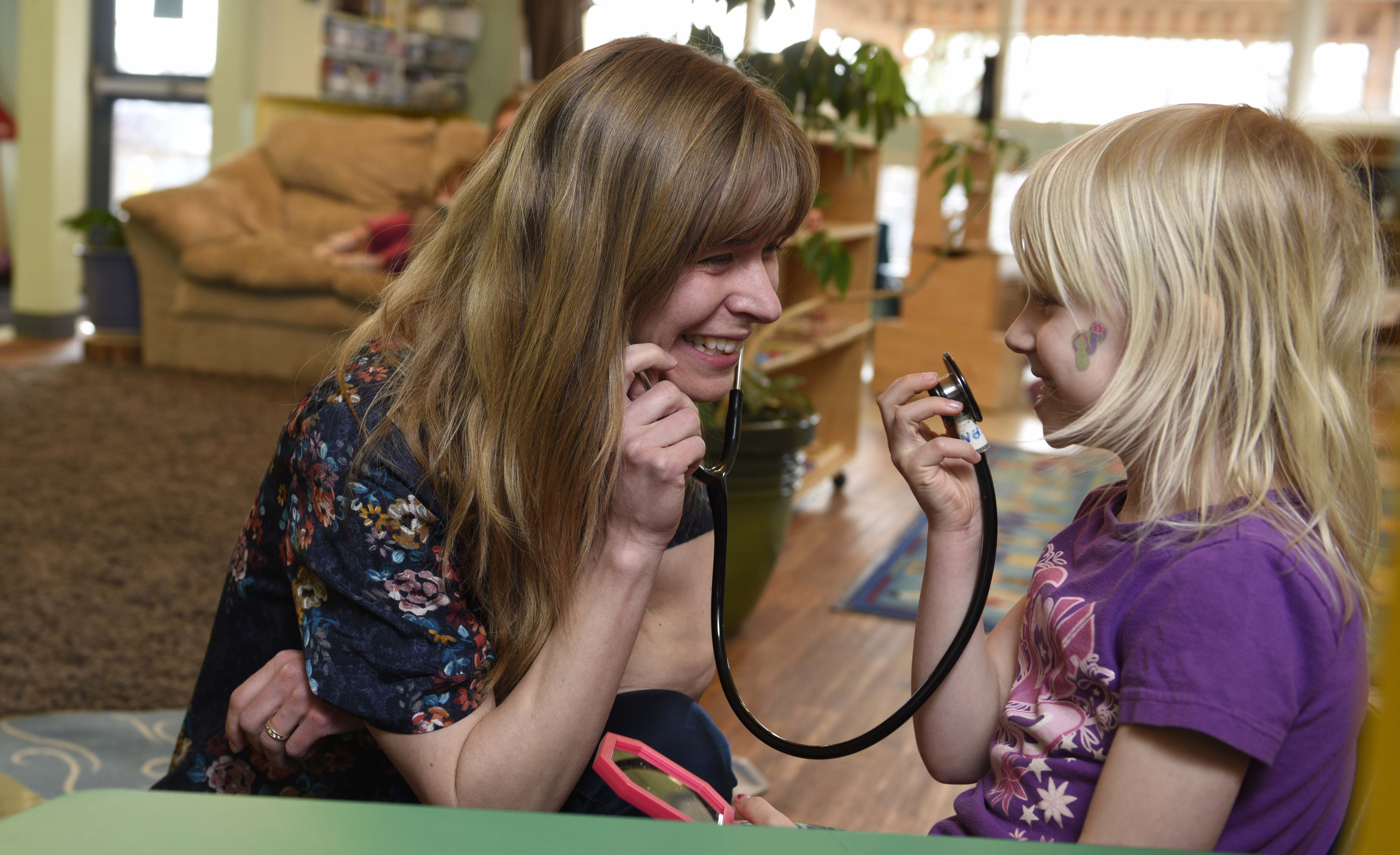
Nurse practitioner student Melanie Starzyk interacts with a child at the UNBC Childcare Centre.
They also check other developmental milestones by engaging with the children in fun activities.
“It is very rewarding,” nurse practitioner student Melanie Starzyk says. “You read a lot in textbooks about working with children, and some students may or may not have children, so to apply the knowledge to this environment just furthers the learning experience.”
Although the children can feel more comfortable in their daycare compared with an exam room, the setting presents its own challenges. Since the parents are not present for the visit, the students are working with limited information and the children can become distracted.
“We are using the history that the children are telling us,” Rowswell says. “It also provides an opportunity to practice re-directing children’s attention.”
Not only are the students able to gain critical experience working with children, they can teach the children about what a nurse practitioner does and make a routine exam fun.
“The students are really grateful for the experience,” says Assistant Professor and Family Nurse Practitioner Program Chair Linda Van Pelt. “They enjoy it because they get to play and interact with the children. They can see the different ways the health of a child can be assessed without over-medicalizing the visit, and how you can screen child growth and development by watching children play and interact.”
The clinical experience would not possible without the support of the UNBC Childcare Centre staff, who help to facilitate the visit, and the parents of the participating children who sign consent forms in advance.
After the visit, the nurse practitioner students write a report for the parents detailing their interactions and assessment of their child. The reports also serve as an education tool for the students as it gives them experience on how best to communicate with parents of young children.
“The students are not the child’s primary care provider, so somehow we have to close that information loop,” Van Pelt says. “It is good learning for the students, but it also gives the parents the information on how the visit went.”
Pictured at top: Nurse practitioner student Kristine Rowswell interacts with a child at the UNBC Childcare Centre.

